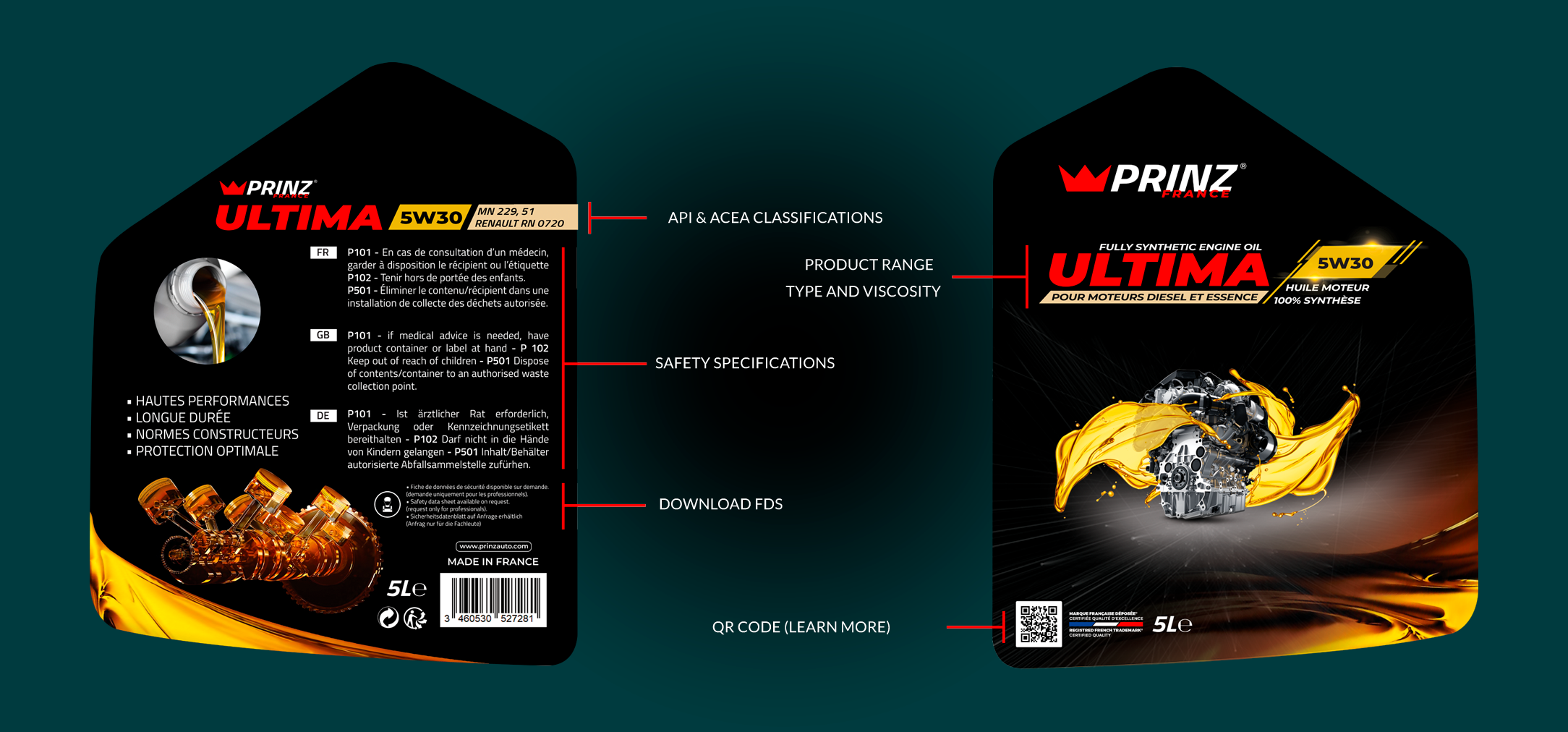There are 5 essential factors that determine the choice of a worthy engine oil. From the quality of the fuel to the different classifications and viscosity… learn to recognize them. Just follow the guide!
1/ Fuel quality
First of all, fuel quality is one of the most important factors. It is measured by 3 key elements: the cleanliness of the fuel (absence of deposits, water …), the octane/cetane number, and, most importantly, the level of sulfur contained in the fuel. Indeed, when the engine is running, it transforms the sulfur into sulfuric acid, which, over time, causes corrosion and considerable damage to the engine. In Europe, the level of sulfur is limited to a maximum of 10 PPM (parts per million), while in Africa this level can reach, in some countries, 2000 PPM. The higher the sulfur content of fuels, the higher the level of sulfuric acid generated and, in turn, the greater the risk of engine failure. This is why it is essential to choose the right lubricant to protect the engine.
2/ The environment and usage
The set of environmental conditions (natural and human) plays a fundamental role in the choice of an engine oil. The condition of the roads, the humidity and dust in the air, the quality of the vehicle’s maintenance, and the driving style can all have an impact on the engine. However, in Africa in general and in Algeria more specifically, these conditions are far from ideal. Hence the need to choose a quality engine oil to ensure optimal protection of the engine against anticipated wear generated by these external conditions.
3/ The quality of engine oils
Respecting oil change and maintenance intervals is good. But using a quality engine oil, adapted to each engine and to the driving conditions, is even better. A poor quality engine oil will not meet the manufacturers’ recommendations in terms of protection time. The engine is therefore exposed more quickly to breakdowns and the transmissions are more quickly vulnerable. A good quality motor oil will meet these requirements and will also clean and maintain the temperature.
4/ The viscosity of an engine oil
The main function of an engine oil is to reduce friction and wear between two elements in contact and in motion with each other. It allows, in short, to evacuate part of the thermal energy generated by this friction, as well as to avoid corrosion. The viscosity of a liquid refers to its thickness. In the field of engine oils, the viscosity level is indicated in SAE. So, in concrete terms, a lubricant with an SAE 40 is thicker than a lubricant with an SAE 20.
There are two types of motor oil, monograde and multigrade. The monogrades are lubricants with a constant viscosity index. The multigrades have a variable viscosity depending on whether the engine is stopped or not
How to read a car lubricant label ?
5/ Classification
There are different types of classifications for motor oils. On the one hand, the API classification (American Petroleum Institute), an international organization that classifies motor oils according to their level of performance, using a series of letters and numbers that at first glance are rather incomprehensible. However, it is quite simple. According to API, there are two classes: class “S” for gasoline engines and class “C” for diesel engines. When these two letters are mentioned on the packaging, it means that the oil can be used on both types of engines
The “S” and “C” classes are followed by a letter. The higher the letter in the alphabetical order, the better the performance of the engine oil. For example, an “SL” oil is more efficient than an “SI” oil. Note that for some diesel oils, the number 4 follows the two letters (e.g. CF-4). This indicates that the oil is intended for 4-stroke engines. Simple!
Another type of classification is the ACEA classification (Association des Constructeurs Européens d’Automobiles) which classifies engine oils into 3 groups. Group A/B for traditional gasoline or diesel light vehicles. Group C (catalytic converter or particle filter, gasoline or diesel “LOW SAPS”). Then group E, for heavy vehicles.
Finally, most of the OEM (Original Equipment Manufacturer) car manufacturers do not find the standards sufficient and add specifications in order to reach their own level of requirement.
What do you think of these tips?
Share your opinion in the comments




